#silent German Expressionist
Text
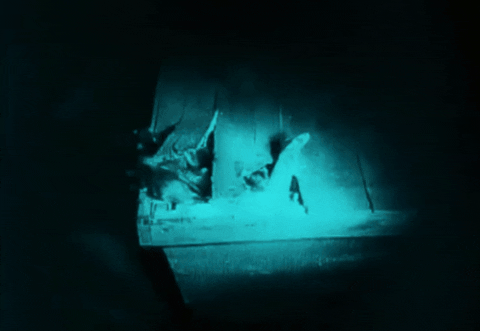


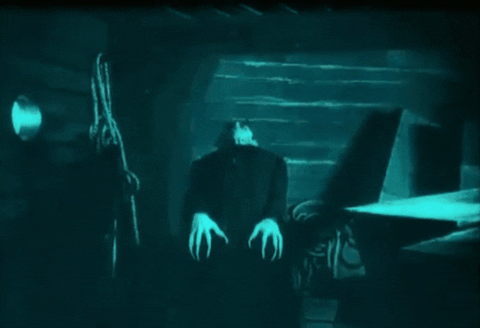

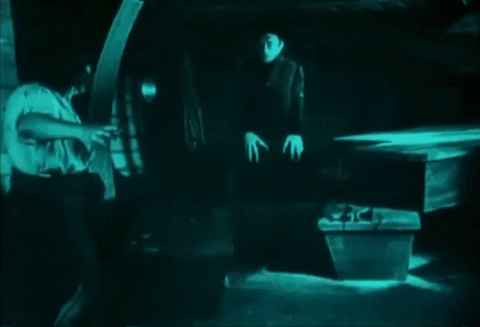
𝔑𝔬𝔰𝔣𝔢𝔯𝔞𝔱𝔲 (յգշշ) 𝔇𝔦𝔯. 𝔉. 𝔚. 𝔐𝔲𝔯𝔫𝔞𝔲
#Nosferatu Eine Symphonie des Grauens#Nosferatu#Post war#1922#20's#20s#expressionist film#silent film#Max Schreck#Count Orlok#Nosferatu (1922)#classic movies#movies#silent German Expressionist#horror movies#my gif#gifs#my edit#gif
104 notes
·
View notes
Text

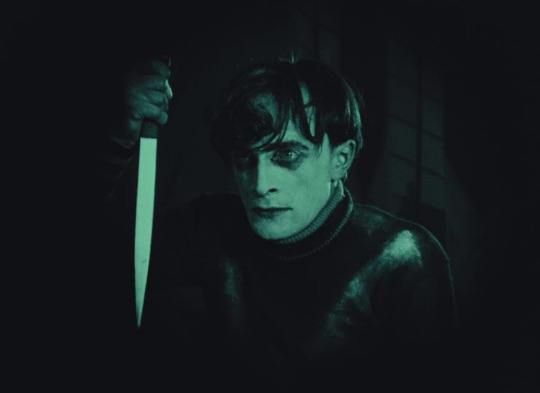


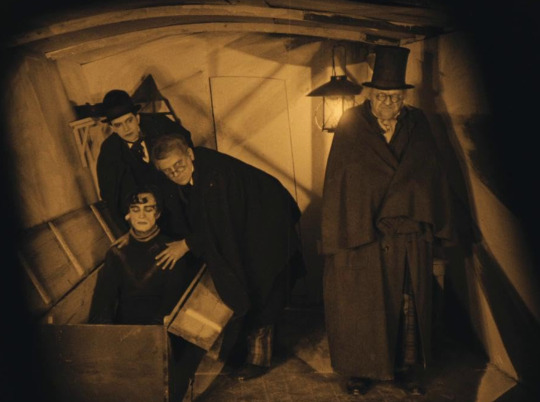

Watching 1 horror movie everyday in October 28/31
The Cabinet of Dr. Caligari (1920), dir. Robert Wiene
#film#horror film#horror films#horror movies#cinema#german film#german cinema#german expressionism#german expressionist#german expressionist film#the cabinet of dr. caligari#the cabinet of doctor caligari#das cabinet des dr. caligari#20s film#20s horror#vintage horror#expressionist horror#silent films#conrad veidt#robert wiene
36 notes
·
View notes
Photo

(via The Grim Gallery: Exhibit 4574)
Paul Wegener (December 11, 1874 - September 13, 1948)
20 notes
·
View notes
Text
On October 30, 1928, the synchronized version of The Man Who Laughs debuted in London.
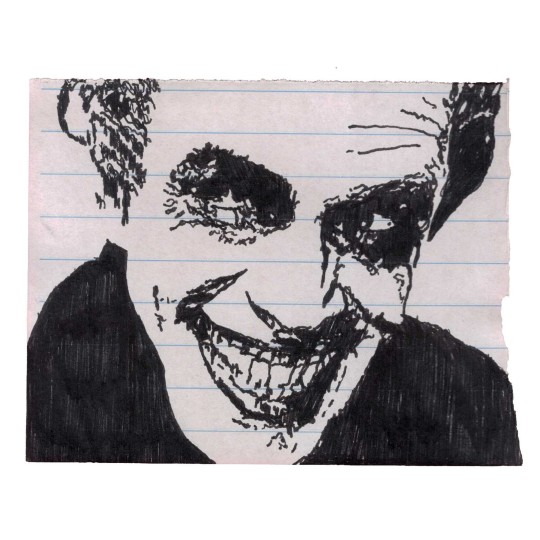
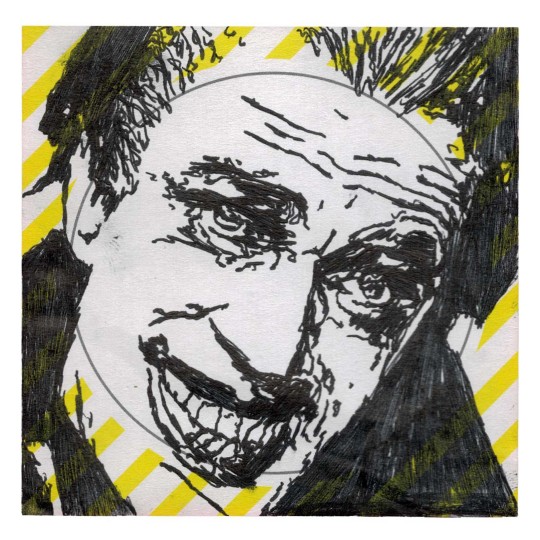
#the man who laughs#paul leni#conrad veidt#silent film#classic film#london#classic cinema#german expressionism#german expressionist film#art#movie art#drawing#movie history
21 notes
·
View notes
Text
#that awkward moment yknow#francisposting again#the cabinet of dr. caligari#friedrich fehér#german expressionism#silent films#german expressionist meme…?#1920s
18 notes
·
View notes
Photo
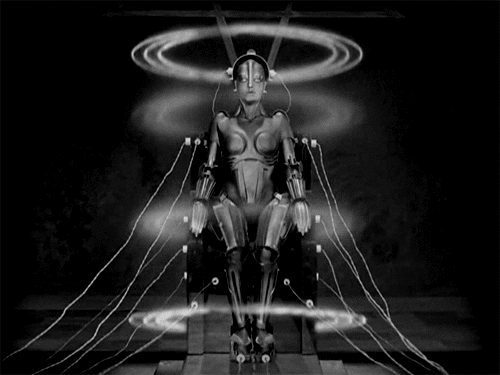
Metropolis, 1927.
#metropolis#silent movie#old movie#20s#science fiction#scifi#old#robot#transhumanism#german movie#german expressionist film#expressionistic#bnw#black and white#black and white movie#black and white film#film camera#arte#sztuka#cinematography#cinematografía#creepy#scary#ai#antichrist#babylon#symbolic#humanity#maria robot
12 notes
·
View notes
Text


Fritz Lang, Spione (1928)
2 notes
·
View notes
Text
METROPOLIS (1927)
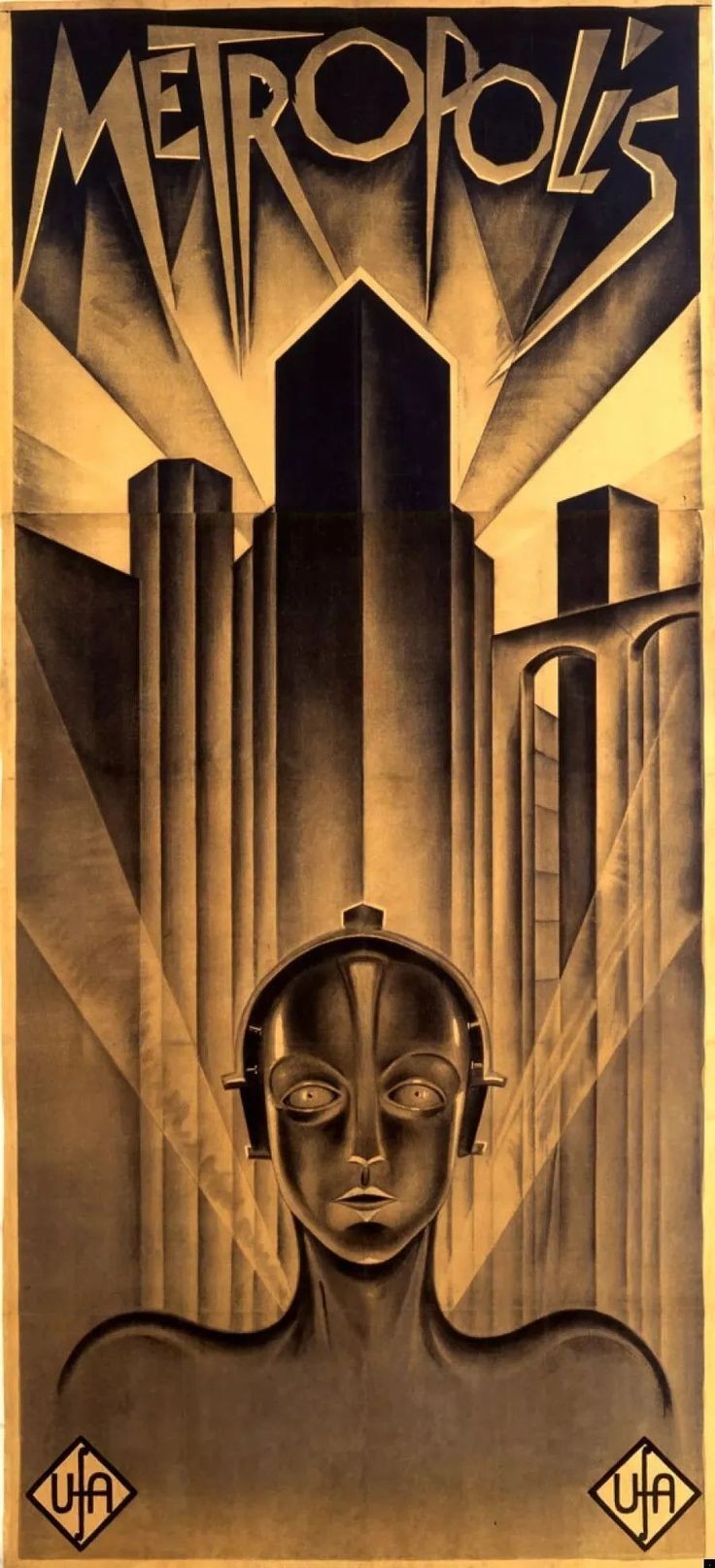
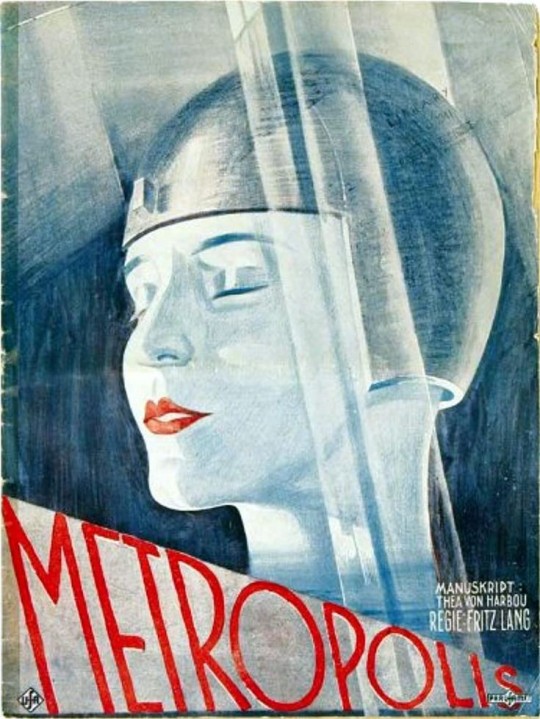
#metropolis#silent film#black & white#sci fi movies#fritz lang#german expressionist#brigitte helm#gustav fröhlich
4 notes
·
View notes
Text
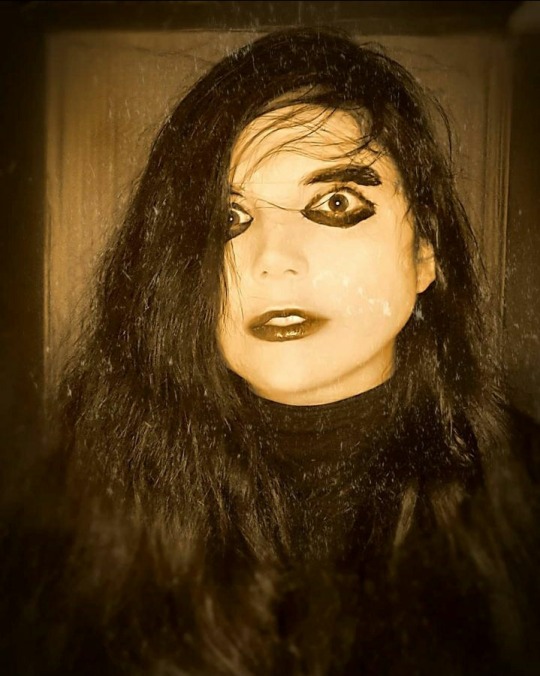
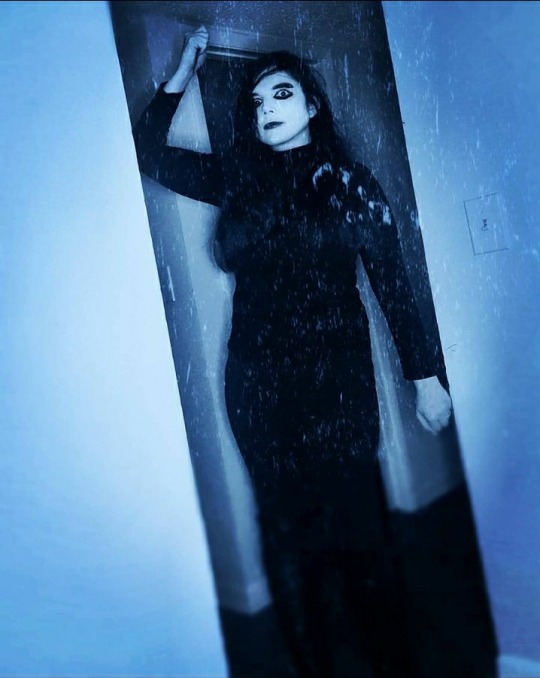
Throwback to the time I cosplayed femme!Cesaré from the Cabinet of Dr. Caligari 🖤
#cosplay#casual cosplay#horror#silent film#pretending my apartment is a German Expressionist setting#or am I?
1 note
·
View note
Photo
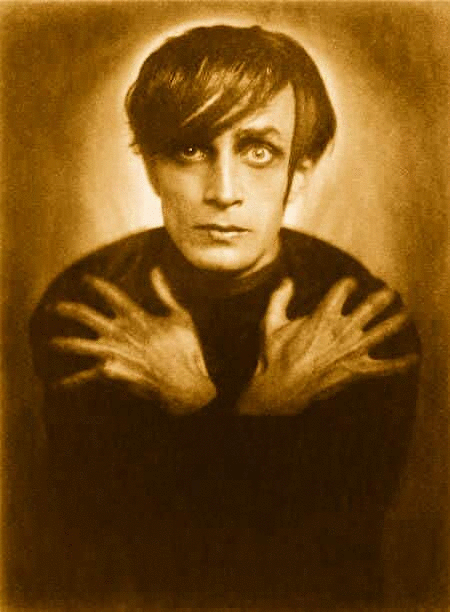
Conrad veidt...the cabinet of dr caligari...
0 notes
Text

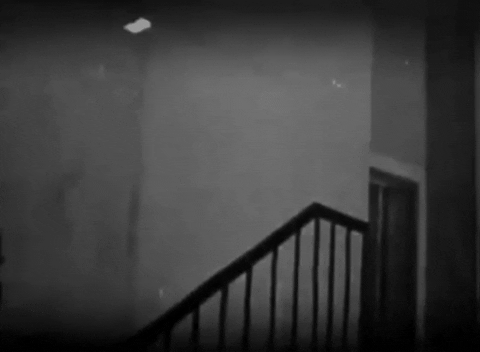


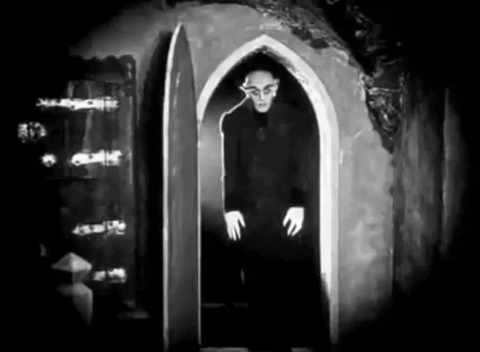


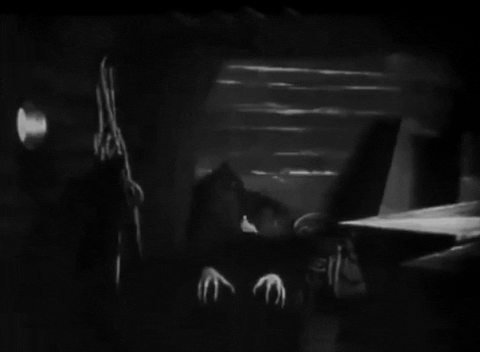
𝔑𝔬𝔰𝔣𝔢𝔯𝔞𝔱𝔲 (յգշշ) 𝔇𝔦𝔯. 𝔉. 𝔚. 𝔐𝔲𝔯𝔫𝔞𝔲
#Nosferatu Eine Symphonie des Grauens#Nosferatu#Post war#1922#20's#20s#expressionist film#silent film#Max Schreck#Count Orlok#Nosferatu (1922)#classic movies#movies#silent German Expressionist#horror movies#my gif#gifs#my edit#gif
61 notes
·
View notes
Text
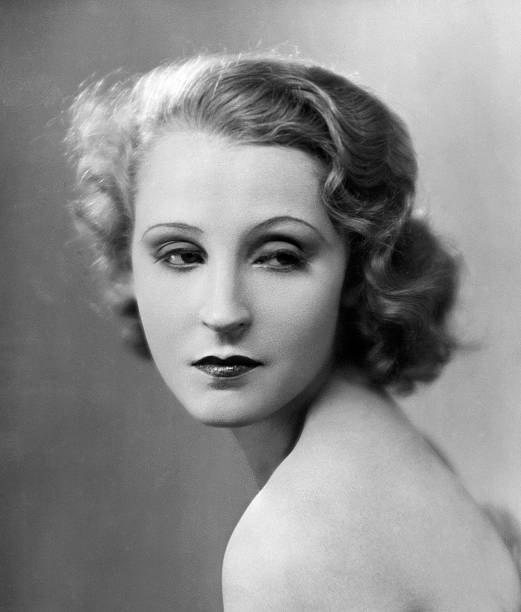

Propaganda
Brigitte Helm (Metropolis)—Brigitte is the goddess of Metropolis and she deserves to win this poll. She is absolutely stunning, and was a pioneer of silent film. In Metropolis she plays both the good-hearted heroine Maria and the evil robotic clone trying to tear it all down, and she carries both roles off perfectly. SHE HAS THE RANGE, DARLING.
Lyda Borelli (Satan's Rhapsody, Love Everlasting)— no propaganda submitted
This is round 1 of the tournament. All other polls in this bracket can be found here. Please reblog with further support of your beloved hot sexy vintage woman.
[additional propaganda submitted under the cut.]
Brigitte Helm propaganda:
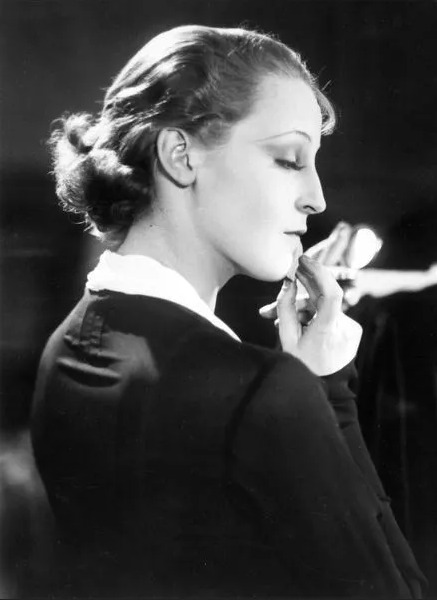
in the movie metropolis (1927) she plays an evil cyborg *and* a communist. The evil cyborg is hot in a deranged way and the communist is just very pretty.
just rewatched metropolis with my dad and the scene where she (as the brand new mechanical woman) is being revealed to the upperclass men??? all those men are the horniest theyve ever been in their lives and its Palpable. also just every time she looks at the camera its like that thing of eyes in a painting following you around a room, she has such a heavy gaze it feels like shes judging you from outside time and space and i know some of the tumblr girlies would really go for that if they knew about her
[Link: the above referenced Metropolis clip. tw for some unsavory slave imagery, eyeball horror, freaky statues, death references—general just be careful warning]
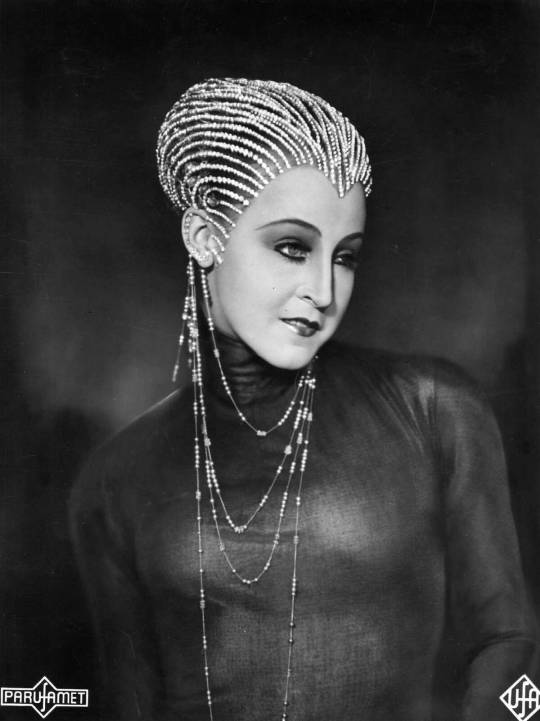
She got to play the most beautiful robot in all of cinema. That's got to count for something.
THEE femme fatale of German Expressionist film. Her double performance as sweet and innocent Maria and her evil robot doppelganger in Metropolis is fantastic.

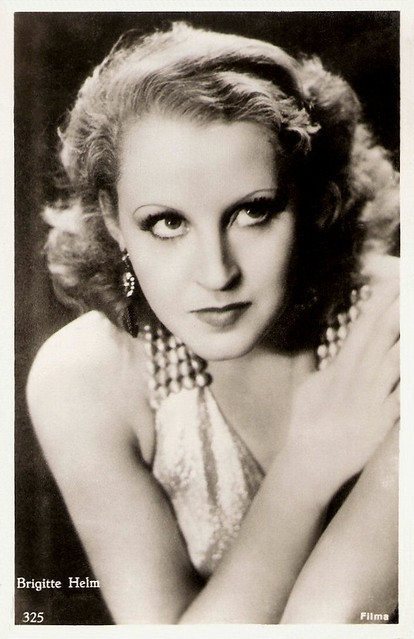

155 notes
·
View notes
Text
The Future Is Noir
Scenography for the darkness with the uncertain future. Architecture of fear in the cinema of 1920s.

Considered the quintessential work of German expressionist cinema, the Cabinet of Dr. Caligari (1920) by Robert Wiene tells the story of an insane hypnotist who uses a brainwashed somnambulist to commit murders.
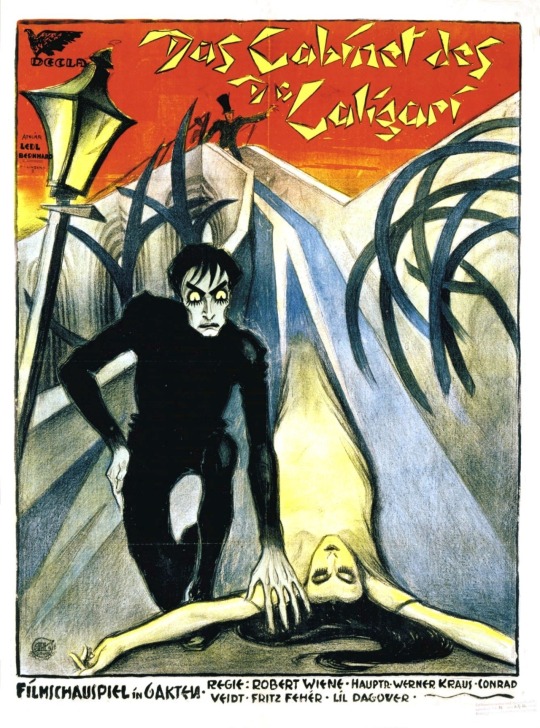
youtube
The film thematizes brutal and irrational authority. Caligari can be representing the German war government, with the symbolic of the common man conditioned to kill. The film include the destabilized contrast between the subjective perception of reality, and the duality of human nature.

An unofficial adaptation of Bram Stoker's 1897 novel Dracula in film is the German version of Nosferatu: A Symphony of Horror (1922) by F. W. Murnau. Nosferatu is an archaic Romanian word Nesuferitu` meaning the offensive or the insufferable one. The movie is actually about the First World War and the plague is a metaphor for the mass death and destruction of the war.

youtube
Nosferatu was banned in Sweden due to excessive horror until 1972. All known prints and negatives were destroyed under the terms of settlement of a lawsuit by Bram Stoker's widow.

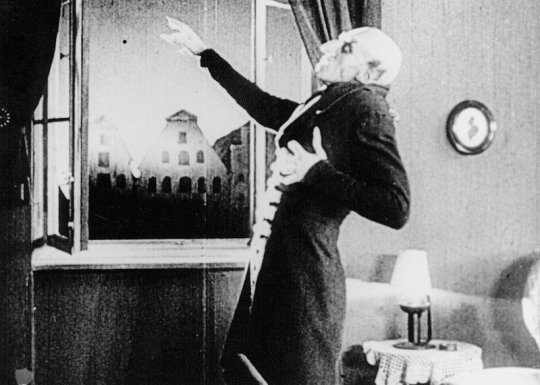
Berlin – Die Sinfonie der Großstadt (1927) is an experimental documentary by Walther Ruttmann. It begins with a drive of a high-speed train pulled by a steam locomotive through meadows, arbor and residential areas into the city and thus delimits the surrounding area from the big city.

The train arrives at Anhalter Bahnhof near the city center, where streets empty in the morning are filling up with people on their way to work. The rhythm of the city is getting faster and faster. With the 12 o'clock bell strike, the speed collapses. After lunch break and food intake, however, it begins to accelerate again in the afternoon.
youtube

Cabiria (1914), an Italian epic silent film by Giovanni Pastrone, was shot in Turin. The film is set in ancient Sicily, Carthage, and Cirta during the period of the Second Punic War (218–202 BC).

It follows a melodramatic main plot about an abducted little girl, Cabiria, and features an eruption of Mount Etna, heinous religious rituals in Carthage, the alpine trek of Hannibal, Archimedes' defeat of the Roman fleet at the Siege of Syracuse and Scipio maneuvering in North Africa.
youtube

One the most influential films in cinema history, Dziga Vertov's exhilarating ode to Bolshevik Russia the Man with a Movie Camera (1929). It is a visual argument for the place of the documentary filmmaker as a worker, educator, and eyewitness in a proletariat society. The film is an impressionistic view of urban daily life, seen from a purely cinematic perspective.

youtube


75 notes
·
View notes
Text
On May 16, 1928, The Man Who Laughs debuted in London, England.



#the man who laughs#conrad veidt#classic film#silent film#german expressionism#expressionist film#1920s#london#movie art#art#drawing#movie history
5 notes
·
View notes
Text
Rewind the Tape —Episode 4
Art of the episode
Just like we did for the pilot and for episodes two and three, we took note of the art shown and mentioned in the fourth episode while we rewatched it. Did we miss any? Can you help us put a name to the unidentified ones? Do you have any thoughts about how these references could be interpreted?


Bust of a Woman with Her Left Hand on Her Chin
Edgar Degas, 1898 [Identified by @terrifique.]
Degas, whose work already appeared in the second episode, was a French painter of the 19th to early 20th century. His impressionist paintings often depicted ballet dancers, racehorses, and human portraits of isolation.
Krumau on the Molde, Kneeling Girl with Spanish Skirt and Self portrait in a jerkin with right elbow raised
Egon Schiele, 1912, 1911 and 1914
Schiele, whose work we have also been seeing around Rue Royale since the pilot, was an Austrian Expressionist painter, very prolific despite passing before turning 30. His work is recognizable for its transgressive portrayal of the nude body, including his nude self-portraits; but his later oeuvre features many landscapes.

The Kitten's Art Lesson
Henriette Ronner Knip, 1821-1909 [Identified by @terrifique.]
Knip was a Dutch-Belgian romantic style artist best known for paintings of animals, particularly cats and dogs of a playful nature. See more of her work here.

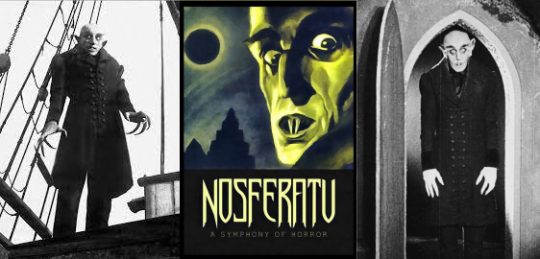
Nosferatu
F.W. Murnau, 1922
Nosferatu is a silent expressionist horror film from the legendary German director F.W. Murnau. It is an unauthorized adaptation of Bram Stoker's Dracula. While not a commercial success upon release in 1922, film historians now consider it an influential and revolutionary film in the horror genre. Since it has been in the public domain since 2019 in the U.S., it is now free to stream on YouTube.
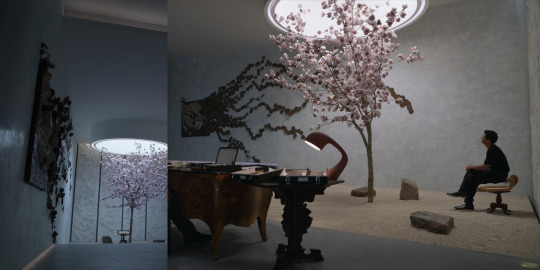
Untitled piece
Sadie Sheldon, undated [Identified by @lanepryce.]

The incredible metalwork piece on the wall of the reading room was made by a New Orleans-based artist, for New Orleans... pizzeria! It was made for Pizza Delicious, using dozens of tin cans. Sheldon describes her work as "site and time-specific projects from found materials (...) related to adaptability, renewal, and appreciating the objects of our everyday life".

New York
George Bellows, 1911 [Identified by @nicodelenfent, here.]
Several of Bellows' pieces have been featured in previous episodes. He was an American realist painter, known for his bold depictions of urban life in NYC. His work "revolutionized the conventions of the traditional American urban vista and surpassed the efforts of other contemporary urban realists" [x].
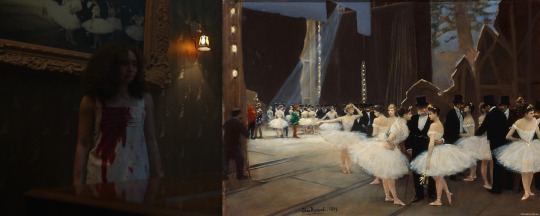
Backstage at the Opera
Jean Beraurd, 1889
Beraurd was a Russian born French painter known for his depictions of Parisian life and society during the Belle Epoque. [Identified by @nicodelenfent.]
Unidentified works
In Claudia's room: above the Knip we can see a painting of what looks like four people, maybe women sitting at a balcony. To the left of the door we can see, on top, a floral bouquet over a dark background, and below that, an illustration or painting of a woman with flowers over a bright pink background.
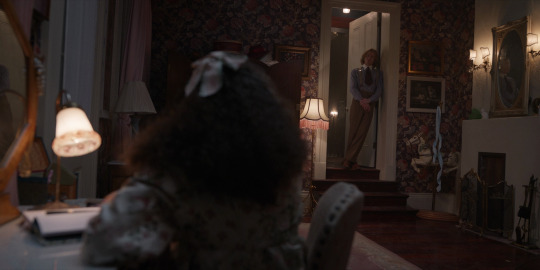
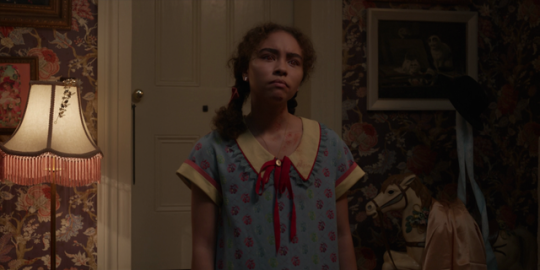
You can see all unidentified works from the first season in this post. If you spot or put a name to any other references, let us know if you'd like us to add them with credit to the post!
Starting tomorrow, we will be rewatching and discussing Episode 5, A Vile Hunger for your Hammering Heart. We can't wait to hear your thoughts!
And, if you're just getting caught up, learn all about our group rewatch here ►
#the vampire claudia#claudia iwtv#louis de pointe du lac#daniel molloy#lestat de lioncourt#vampterview#interview with the vampire#iwtv#amc interview with the vampire#interview with the vampire amc#amc iwtv#iwtv amc#IWTVfanevents#rewind the tape#analysis and meta#art of the episode#the ruthless pursuit of blood with all a child's demanding
31 notes
·
View notes
Text
Watching every Dracula adaptation! #1
Nosferatu: A Symphony of Horror by F. W. Murnau
(German: Nosferatu – Eine Symphonie des Grauens)
from 1922
We’ll be starting with the very first movie adaptation of Dracula (that isn’t lost media). The movie is free on YouTube, if anyone wants to watch it themselves.
For the uninitiated, the movie is a black-and-white silent German Expressionist horror film. Well maybe it was a horror film in 1922 but from a modern point of view, the movie, especially the over the top acting is more comical than anything.
As many might know the movie was an unauthorized adaptation and interestingly enough was supposed to be destroyed after they lost the copyright dispute.
Should you watch it?
Eh, sure. It has a lot of funny moments and again it’s free on YouTube.
Especially the people, that really like Johnathans and Minas relationship in the novel will enjoy that their relationship is a focal point in the movie.
Characters:
Since the movie was made for a German audience and takes place in Germany instead of England, the character names have all been changed (there are versions of the movie with the book names though).
I’ll be referring to the characters by their book names to avoid confusion (except for Nosferatu, since people know who that is). The movie names are in the brackets.
Jonathan Harker (Thomas Hutter) is just a sweet, cheerful little guy who loves his goth wife.
Mina Murray (Ellen Hutter) is quite different from her book counterpart, her actress constantly looks like she is plagued by visions™ and apparently has psychic anti-vampire powers. She is also my favorite part of the movie.
Count Dracula is obvioulsy Count Orlok aka Nosferatu. There isn’t really much to say about the guy, he is pretty much exactly how you imagine him to be.
Arthur Holmwood (Harding), Lucy Westenra (Ruth), Jack Seward (Dr. Sievers) and Van Helsing (Bulwer) are all relegated to side characters. Mina stays with Lucy and Arthur while Jonathan is away, Jack is also the town doctor apart from owning the asylum and Van Helsing is there to info-dump to the audience on various matters.
Renfield (Knock) is actually Jonathans boss in this version before he gets sent to the asylum.
(No cowboy in this movie, which I think will be a running theme with these adaptations.)
Plot and Book Differences:
The movie follows a lot of the plot beats from the book. The big differences are that the movie begins before Jonathan starts his journey, all of Lucy’s plotlines being dropped and the ending. A new addition is also the theme of plague and disease, which has some very antisemitic undertones (much like Nosferatus design).
The ending takes place in Wisborg (a fictional German town that is used instead of London) instead of back in Transylvania. Nosferatu is also not staked through the heart but killed by the sunrise. Mina also maybe dies at the end or maybe she just faints, it’s a bit unclear. Nosferatu also kills way more people in the movie than Dracula does in the book.
Interesting and/or Funny Moments:
-Mina’s cat:

-Jonathan giving Mina flowers, her saying “Why did you kill them... such beautiful flowers...?!” and Jonathan reacting like that’s the most normal response ever
-The Romainian townsfolk warning Jonathan about a werewolf, cut to a striped hyena they probably filmed at a zoo
-all the scenes where characters talk about how it’s totally the middle of the night while the sun is blaring down on them. (I get that lighting a night scene in 1922 was probably almost impossible)
-this clock:

-Nosferatu just straight up sucking Jonathans thumb after he accidentally cut himself
-Jonathan noticing bitemarks on his neck and being like “must have been mosquitos (shrug)” (This happens after the thumb sucking btw)
-Nosferatu seeing a picture of Mina and unironacally saying “Your wife has a lovely neck...”
-the acutally very cool shadow effects they use for Nosferatu, especially the ones at the end of the movie
-Nosferatu carrying his coffin by himself through the entire town while looking like a kid that got lost in IKEA
Next Up:
Dracula (1931) starring Bela Lugosi
#writing this was more work than I anticipated#but 3 people wanted me to do these reviews#so I will do it!#dracula daily#nosferatu#nosferatu (1922)#dracula adaptation
173 notes
·
View notes